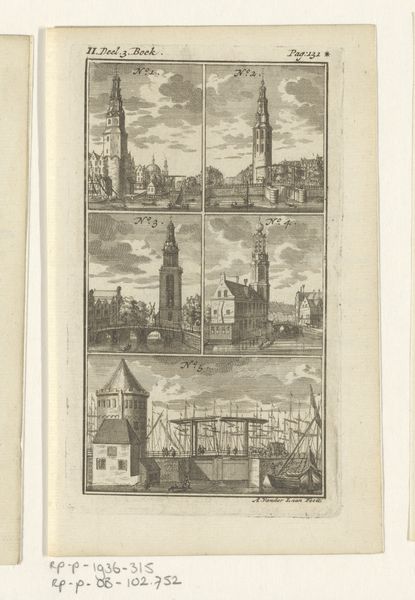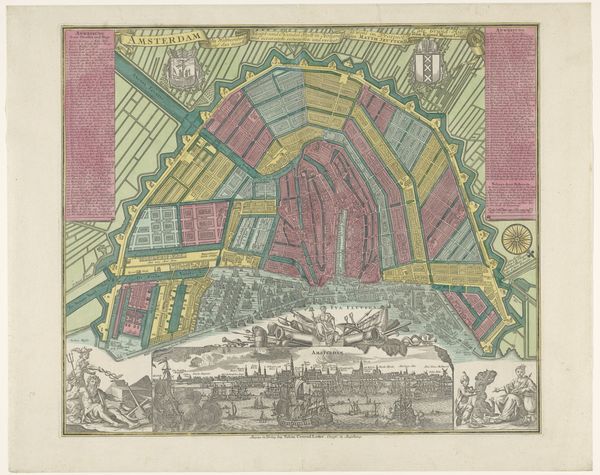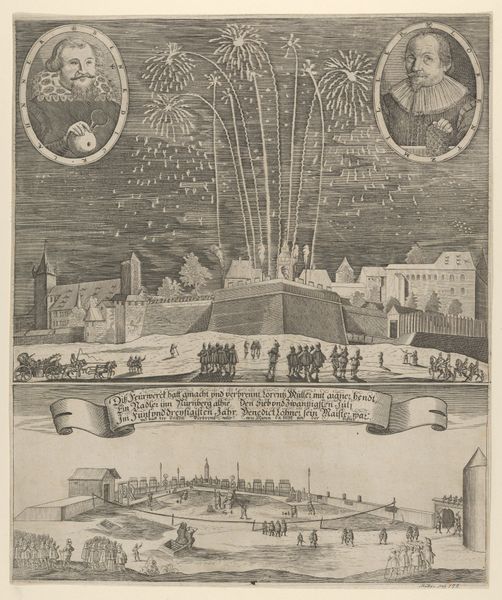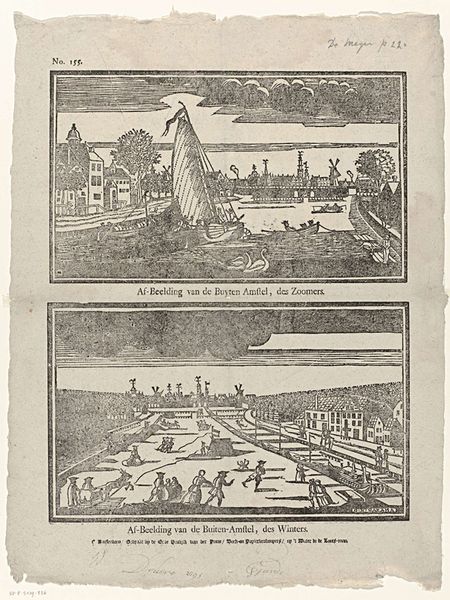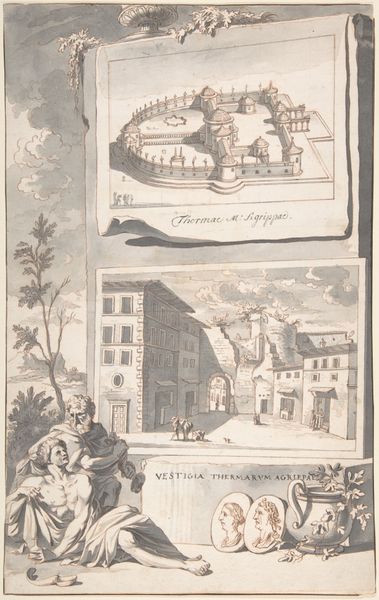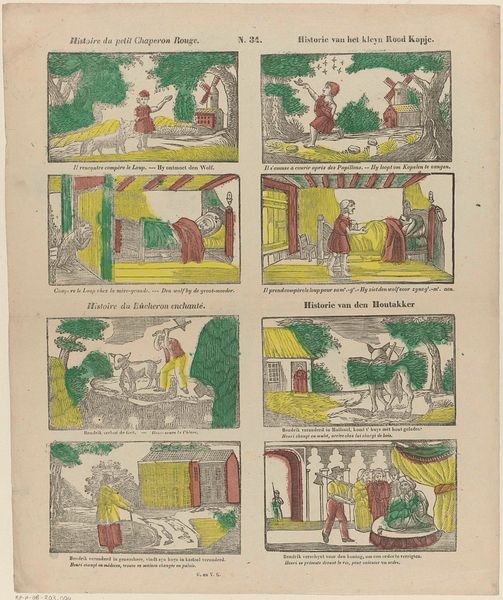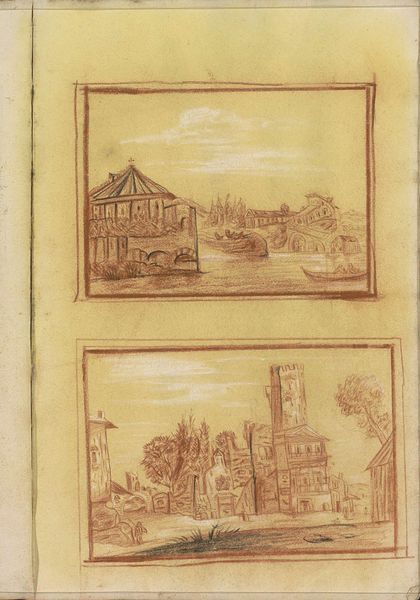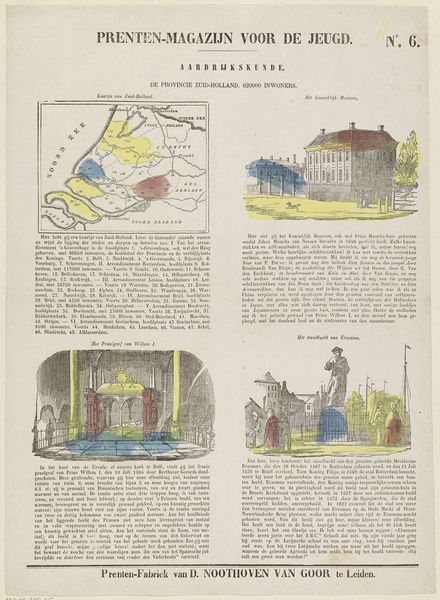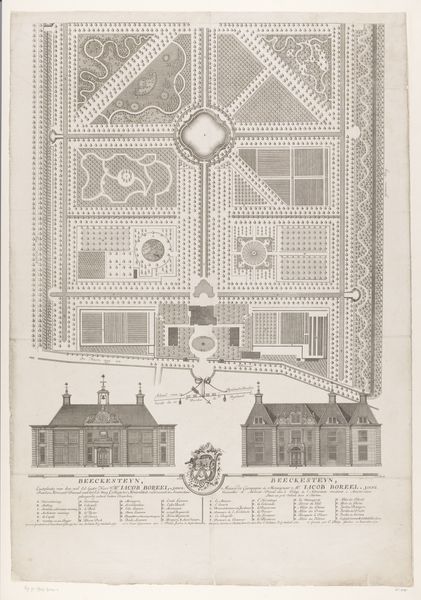
De Delftsche poort te Rotterdam / De blaauwe molen, bij den Cingel te Rotterdam 1833 - 1900
0:00
0:00
print, etching, engraving
#
aged paper
#
toned paper
# print
#
etching
#
old engraving style
#
landscape
#
cityscape
#
engraving
Dimensions: height 391 mm, width 320 mm
Copyright: Rijks Museum: Open Domain
Dirk van Lubeek made this print of Rotterdam using etching, a form of printmaking that relies on the controlled corrosion of metal. Think about the labor and class implications of this choice. In etching, the artist covers a metal plate with a waxy, acid-resistant coating, then scratches an image into the wax. When the plate is dipped in acid, the exposed metal is eaten away, creating recessed lines. These lines then hold ink, which is transferred to paper under pressure. The final image is a network of fine lines. Note how the lines are dense, and closely packed. Van Lubeek may have been working in multiples, and this print would have been relatively affordable and helped to circulate ideas and images widely, connecting to broader issues of politics and consumption. The print would be available to a wider audience than painting, and we can see that its very mode of production influences its appearance. It challenges our understanding of fine art and craft.
Comments
No comments
Be the first to comment and join the conversation on the ultimate creative platform.


